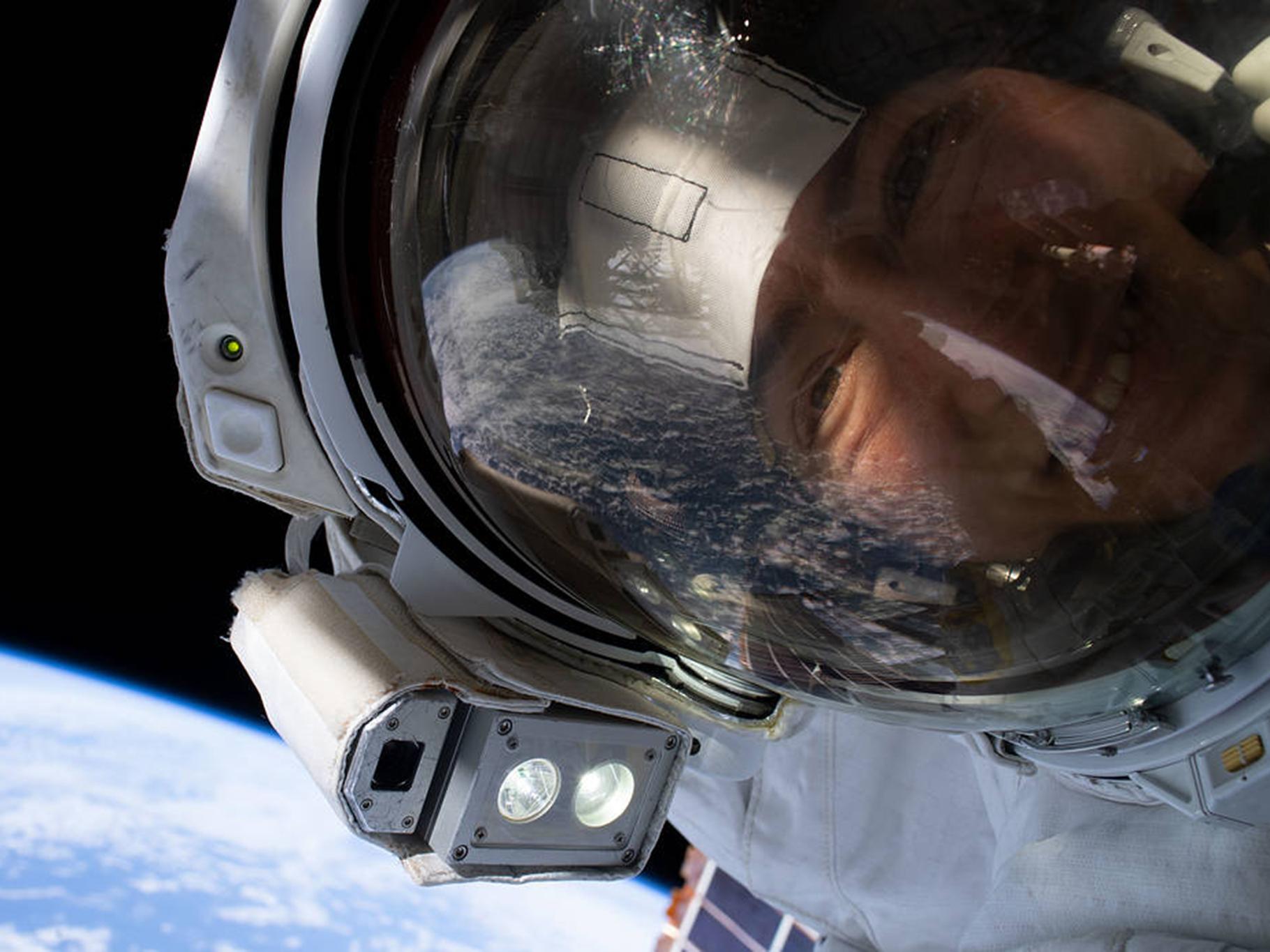A giant leap for womankind
Christina Koch completed three all-female spacewalks and set a record for time in space, but you should remember her for much more, writes Mary Robinette Kowal

How many astronauts can you name without consulting Google or Wikipedia?
Neil Armstrong and Buzz Aldrin are easy. They were the first men on the moon. You should probably also remember their command module pilot, Michael Collins. But he wasn’t one of the first on the moon, so he comes less easily to mind.
Christina Koch, who returned to Earth on Thursday, might be another name you’ll come to remember. She and Jessica Meir executed the first all-woman spacewalk. Although Koch performed six spacewalks during her mission, set a duration record for time in space and contributed enormously to space science, that October spacewalk will be what gets her into history books.
In the same way, Sally Ride is known for being the first American woman in space, but not for her work in the development of the space shuttle’s robotic arm. In all of these cases, being first was a matter of timing, not something that was under the direct control of the astronauts credited for their trailblazing.
It’s not as if there was a race to be on the first all-female spacewalk. In fact, the opposite might be said to be true.
The presence of Koch and Meir on that spacewalk was practically an accident. Nasa has 48 active-duty astronauts, of which 16 are women. The first female spacewalk was supposed to be Anne McClain and Koch last March. But only one suit was available that fit the women, so they had to restaff the spacewalk with a male astronaut.
If the all-female spacewalk had occurred then, McClain, not Koch, would have been its commander. Koch would not be the one who spoke to the president. And this essay might instead be about McClain, who would have been first out of the airlock.
With Koch’s return to Earth, she now holds another distinction: the longest stay by a female astronaut in space, 328 days. (Currently, the American record-holder for the longest single stay is Scott Kelly, with 342 days in space, and the record-holder for cumulative time is Peggy Whitson with 665 days spread over three flights.) Koch volunteered for this mission as part of a long-duration experiment, but the assignment was not in her direct control.
Nasa's groundbreaking decade of space exploration: In pictures
Show all 10While we celebrate the records Koch now holds, the achievements that come directly from her efforts are less heralded.
She conducted research in microgravity on mizuna mustard greens, examining the role of gravity and space on whole-plant health, cellular development and tissue growth. Perhaps most importantly, she also looked at how growing plants affects human community. Humans bond over food, and being able to grow food in space could be important to social dynamics during future long-duration crewed missions to the moon or Mars.
During research with the stations’ Advanced Combustion via Microgravity Experiments (ACME) Chamber, Koch studied the behaviour of fire in space. Her work could help spacecraft use fuel more efficiently and help with preventing fires. On Earth, this knowledge can also be applied to reducing combustion pollutants.
And Koch worked with the Cold Atom Laboratory, in which clouds of atoms are chilled to about one ten-billionth of a degree above absolute zero and become nearly motionless, so scientists can study behaviours and quantum characteristics. Kidney health, Earth observations, the International Space Station agricultural camera, the capillary structures experiment, the microgravity crystals experiment, the biofabrication facility, cubesats … all of this effort, eclipsed by two records.
But those records are important because they signal a change.
We note the first all-female spacewalk because it is a threshold. Koch and Meir also participated in the second and third all-female spacewalks. There will be others, and they will not be noted, because the threshold we’ve crossed leads us into a future where women in space are not the exception.
Likewise, her long-duration mission opens windows of understanding that will be necessary for human spaceflight to the moon and Mars. Currently, most of the data on the effect of radiation on women comes from survivors of Hiroshima. From that, it appears that radiation affects women more significantly than it does men. No one knows why. But Nasa regulations restrict the amount of time that women can go into space, because the sample pool has been too small to tell if cosmic radiation acts differently on women’s bodies. Koch’s long-duration mission is a marker that the agency is serious about making space available for everyone.
Many questions remain that could only be answered with her safe return to Earth. Nasa flight surgeons and scientists will pore over the changes to her physiology in the same way they studied Kelly and Whitson.
In the future, someone will pass these endurance records. The first woman will walk on the moon, Nasa promises. Two or more women will go on the first all-woman launch. Perhaps we’ll see the first all-woman crew on the ISS. But for now, those missions remain mere potentialities. Koch has earned her place in the history books, and by crossing these thresholds, has opened a door to the future.
And, hopefully, she’s become one more astronaut that you can name.
© New York Times
Subscribe to Independent Premium to bookmark this article
Want to bookmark your favourite articles and stories to read or reference later? Start your Independent Premium subscription today.

Join our commenting forum
Join thought-provoking conversations, follow other Independent readers and see their replies